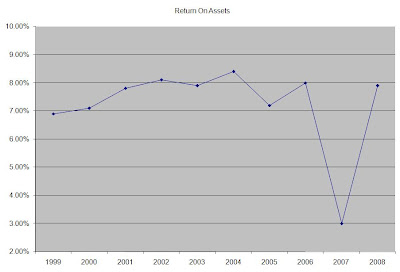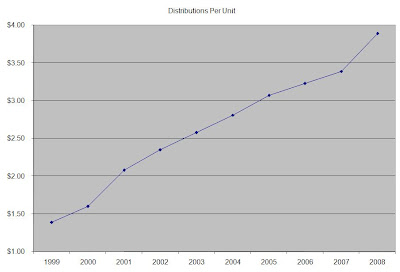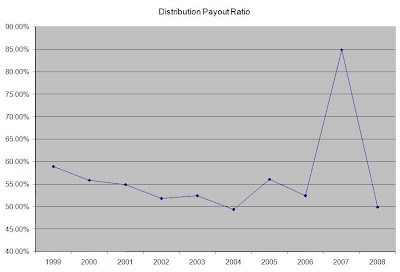Full Disclosure: At the time of this writing, I held no position in HCC (0.0% of my Income Portfolio). What are your thoughts on HCC?Linked here is a detailed quantitative analysis of HCC Insurance Holdings Inc. (HCC). Below are some highlights from the above linked analysis:
Company Description: HCC Insurance Holdings Inc. is a multi-line insurer that specializes in aviation, marine, medical stop-loss, offshore energy and property and casualty insurance in the U.S. and the U.K.
Fair Value: I consider four calculations of fair value, see page 2 of the linked PDF for a detailed description:
HCC is trading at a discount to all four valuations above. The stock is trading at a slight discount to its calculated fair value of $26.41. HCC earned a Star in this section since it is trading at a fair value.
Dividend Analytical Data: In this section there are three possible Stars and three key metrics, see page 2 of the linked PDF for a detailed description:
HCC earned three Stars in this section for 1.), 2.) and 3.) above. A Star was earned since the Free Cash Flow payout ratio was less than 60% and there were no negative Free Cash Flows over the last 10 years. The stock earned a Star as a result of its most recent Debt to Total Capital being less than 45% and earned a Star for having an acceptable score in at least two of the four Key Metrics measured. Rolling 4-yr Div. > 15% means that dividends grew on average in excess of 15% for each consecutive 4 year period over the last 10 years (1999-2002, 2000-2003, 2001-2004, etc.) I consider this a key metric since dividends will double every 5 years if they grow by 15%. The company has paid a cash dividend to shareholders every year since 1985 and has increased its dividend payments for 13 consecutive years.
Dividend Income vs. MMA: Why would you assume the equity risk and invest in a dividend stock if you could earn a better return in a much less risky money market account (MMA)? This section compares the earning ability of this stock with a high yield MMA. Two items are considered in this section, see page 2 of the linked PDF for a detailed description:
HCC earned a Star in this section for its NPV MMA Diff. of the $2,387. This amount is in excess of the $2,200 target I look for in a stock that has increased dividends as long as HCC has. If HCC grows its dividend at 15.0% per year, it will take 5 years to equal a MMA yielding an estimated 20-year average rate of 3.72%.
Other: HCC is a member of the Broad Dividend Achievers™ Index.
Conclusion: HCC earned one Star in the Fair Value section, earned three Stars in the Dividend Analytical Data section and earned one Star in the Dividend Income vs. MMA section for a total of five Stars. This quantitatively ranks HCC as a 5 Star-Strong Buy.
Using my D4L-PreScreen.xls model, I determined the share price would need to increase to $26.94 before HCC's NPV MMA Differential decreased to the $2,200 minimum that I look for in a stock with 13 years of consecutive dividend increases. At that price the stock would yield 1.93%.
Resetting the D4L-PreScreen.xls model and solving for the dividend growth rate needed to generate the target $2,200 NPV MMA Differential, the calculated rate is 14.7%. This dividend growth rate is slightly less than the 15.0% used in this analysis, thus providing very little margin of safety. HCC has a risk rating of 1.50 which classifies it as a low risk stock.
HCC uses an opportunistic underwriting approach in which the it waits for other insurers to suffer losses in a particular insurance line. Then the company enters benefiting from their mistakes. Risks of catastrophic events in HCC's aviation and energy businesses increase earnings volatility. Also, as a result of the financial crisis, there is increased risk associated with HCC's directors and officers business. Although, the stock is trading slightly below my buy price of $26.41, its reliance on a high dividend growth rate to achieve its target NPV MMA Diff , along with a dividend yield of less than 2% will keep me on the sidelines for now. For additional information, including the stock's dividend history, please refer to its data page.
Disclaimer: Material presented here is for informational purposes only. The above quantitative stock analysis, including the Star rating, is mechanically calculated and is based on historical information. The analysis assumes the stock will perform in the future as it has in the past. This is generally never true. Before buying or selling any stock you should do your own research and reach your own conclusion. See my Disclaimer for more information.
Recent Stock Analyses:
This article was written by Dividends4Life. If you enjoyed this article, please vote for it by clicking the Buzz Up! button below.
Continue Reading »

















